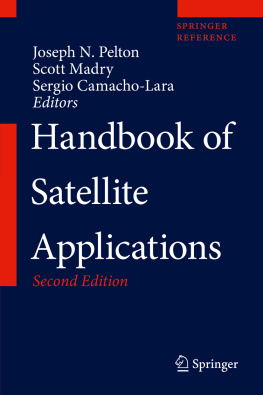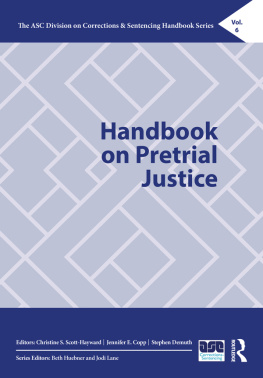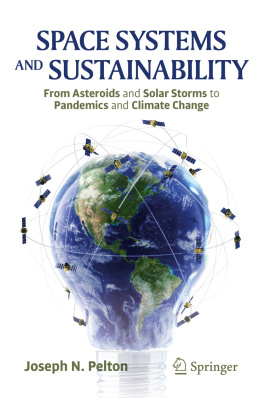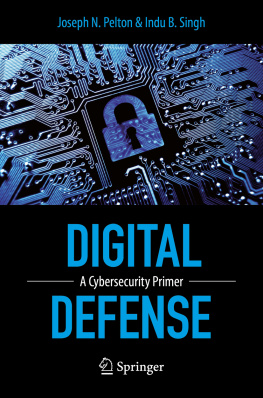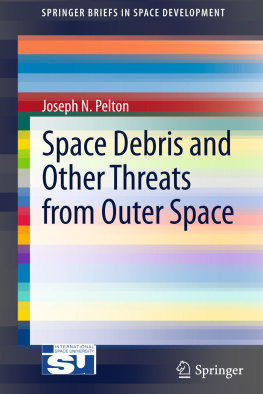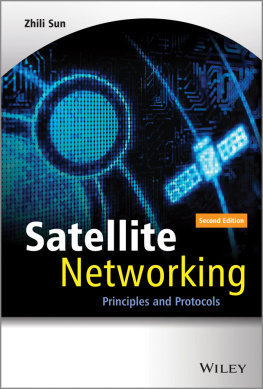Part I
Satellite Communications
Springer International Publishing Switzerland 2017
Joseph N. Pelton , Scott Madry and Sergio Camacho-Lara (eds.) Handbook of Satellite Applications 10.1007/978-3-319-23386-4_91
Satellite Applications Handbook: The Complete Guide to Satellite Communications, Remote Sensing, Navigation, and Meteorology
Joseph N. Pelton 1
(1)
International Space University, Arlington, VA, USA
(2)
Global Space Institute, Chapel Hill, NC, USA
(3)
Centro Regional de Enseanza de Ciencia y Tecnologa del Espacio para Amrica Latina y el Caribe (CRECTEALC) Santa Mara Tonantzintla, Puebla, Mxico
Joseph N. Pelton (Corresponding author)
Email:
Sergio Camacho-Lara
Email:
Abstract
This chapter introduces what is meant by the term applications satellite and addresses why it makes sense to address the four main space applications in a consolidated reference work. This handbook employs a multidisciplinary approach and thus includes technical, operational, economic, regulatory, and market perspectives. These are all key areas wherein applications satellites share a great deal in common. This commonality can be seen in terms of spacecraft systems engineering, in terms of launch services, in terms of systems economics, and even in terms of past, present, and future market development.
This is not to suggest that there are not important technical and operational differences with regard to the four prime areas of satellite applications, namely, communications satellites, remote sensing satellites, global navigation satellites, and meteorological satellites. Such differences are addressed in separate sections of the handbook.
Yet in many ways there are strong similarities. Technological advances that come from one type of applications satellite can and often are applied to other services as well. The evolution of three-axis body-stabilized spacecraft, the development of improved designs for solar arrays and battery power systems, improved launch capabilities, and the development of user terminal equipment that employs application-specific integrated circuits (ASIC) are just some of the ways the applications satellites involve common technologies and often in a quite parallel manner.
All four types of applications satellites provide key and ever-important services to humankind. Around the world, peoples lives, their livelihood, and sometimes their very well-being and survival are now closely tied to applications satellites. Clearly the design and engineering of the spacecraft buses for these various applications satellite services as well as the launch vehicles that boost these satellites into orbit are very closely akin. It is hoped that this integrated reference document can serve as an important source of information that addresses all aspects of application satellites from A to Z. This handbook thus seeks to address all aspects of the field in a totally comprehensive basis.
This Handbook of Satellie Applications thus covers spacecraft and payload design and engineering, satellite operations, the history of the various types of satellites, the markets, and their development past, present, and future, as well as the economics and regulation of applications satellites, and key future trends.
Keywords
Applications satellite Committee on the Peaceful Uses of Outer Space (COPUOS) Earth observation-Global Navigation Satellite Systems Launch services Markets for satellite applications Military satellite communications Precision Navigation and Timing Satellite broadcasting Satellite communications Satellite meteorology Satellite navigation and positioning Satellite remote sensing Scientific satellites United Nations
Introduction
Artificial satellites have now been around for more than a half century. The launch of Sputnik in October 1957 ushered in the space age and confirmed Sir Isaac Newtons theoretical explanation of how an artificial satellite could be launched into Earth orbit. Today the world of satellites can be divided into two broad areas scientific satellites and applications satellites.
Scientific satellites explore and help humanity acquire new information about our world, our solar system, our galaxy, and the great cosmos within which we exist. The scientific satellites explore radiation from the Van Allen Belts to cosmic radiation, from black holes to even the formation of stars and galaxies. Scientific missions engage in Geodesy to measure our Earth and tectonic movements. They study the workings of the Sun and the characteristics of the our Solar System, including the planets, their moons, asteroids, comets, and the Oort cloud well beyond the orbit of Pluto. Astronomical observatory satellites explore the stars and galaxies and give us a view of the Universe near its beginning as well as help us to discover exoplanets in other star systems.
This handbook, however, is about the applications satellites that provide practical and business services to people here on Earth. These are the communications satellites, the remote sensing satellites, the space navigation and positioning satellites, and the meteorological satellites that truly serve humankind.
Thousands of applications satellites have now been launched over the past half century. These practical satellites now represent a huge global industry. These satellites are a part of our everyday lives whether we know it or not. Every time you hear a weather report or every time you use a GPS or Glonass device to navigate your car, you are relying on an applications satellite. Services such as worldwide news, satellite entertainment channels, coverage of sporting events, communications to ships at sea or aircraft in the skies, and many more vital services frequently depend on satellites. Farmers now rely on satellites to irrigate their crops, add the right amount of fertilizer, or detect a crop disease. Fishing fleets use satellites to know where to fish. Energy and resource companies employ satellite imaging to know where to dig or drill. Efforts to combat global warming, preserve the Ozone layer that is essential to life on Earth, and other activities to sustain the biodiversity of plant and animal life on our planet all depend on applications satellites. Responding to major disasters routinely involves analysis of satellite imagery and mobile satellite communications.
This book is thus a comprehensive reference work about the practical use of satellites to serve humanity and make our lives better. Application satellites are thus machines in orbit offering vital services to provide vital capabilities to humankind.
The multibillion-dollar (US) world of commercial satellite applications and services continues to expand each year. This means that the technology is becoming more sophisticated and reliable and the practical applications ever broader. Commercial satellite applications and satellite technology are both becoming more sophisticated and efficient. This is particularly true in terms of finding more and more applications in different fields and in the expanded use of automation and the application of expert systems and artificial intelligence to allow more autonomous operation of satellites in outer space. Precise navigation, positioning, and timing satellites are key to the global synchronization of the Internet. The sizes of satellite applications markets are now measured in the hundreds of billions of dollars (US). Virtually every country and territory in the world relies on applications satellites for multiple space-based services.
The diversity of the submarkets within the field we have defined as satellite applications continues to expand and becomes more complex. Indeed, in view of this growing dependency on space applications and the expanding number of satellites in near-, middle-, and Geostationary Earth orbits, the international community, through the United Nations and other forums, is working to ensure the long-term sustainability of activities in outer space.

